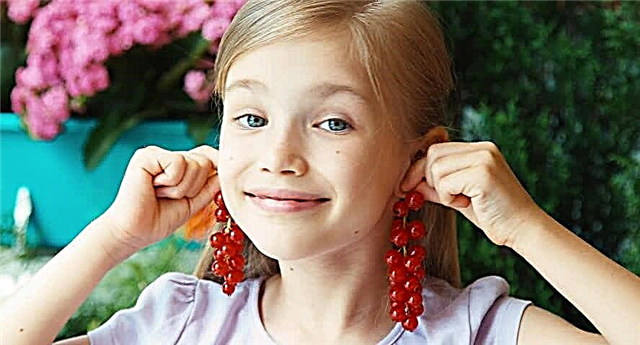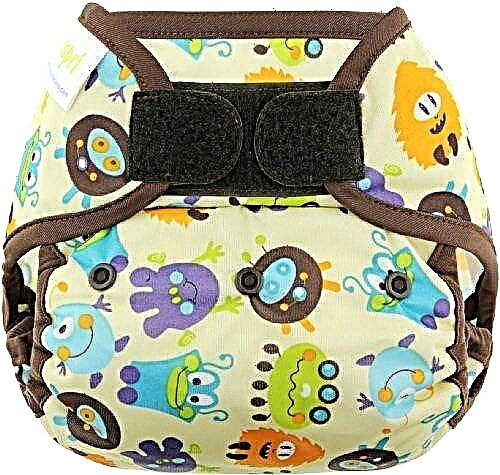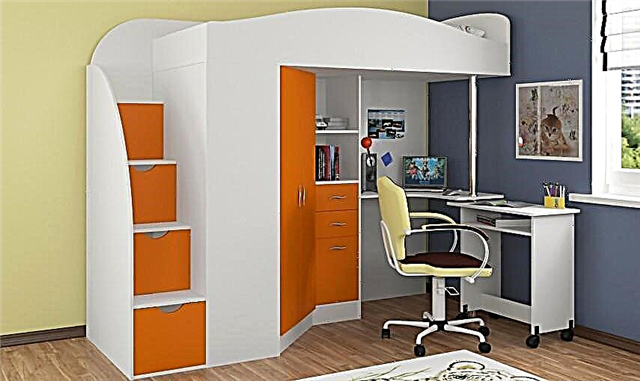
Children are very different from adults in absolutely all respects, including their thinking. In order to be able to communicate correctly with a child, without making mistakes, to find ways to the process of his upbringing, it is necessary to clearly understand how children's thinking works and what are the features of its development.
Psychological features
In children, as in adults, mental activity is due to various psychological characteristics and aspects... First of all, this is due to their age-related development and a gradual change in types of thinking, which are gradually overlaid on each other according to the principle of complication.
In infancy, the thinking of children can be called sensitive, that is, sensitive to external stimuli and events.
The main operations that the consciousness of the crumbs can perform during this period are perception of information through hearing and touching subjects from the outside... Based on the information received and the feelings that have arisen, the developing consciousness gives corresponding various reactions. The child is sensitive.

At 1.5-2 years the ability to observe and perform any actions with surrounding objects is developing most intensively.
By 3-4 years the ability of consciousness is formed not only to observe and perform actions, but to observe and create in the mind its first ideas and images, which the child can already demonstrate abstractedly from the object of reality itself.
By the age of 5 a verbal-logical type of information comprehension begins to emerge in children.
Therefore, for the development of thinking in preschool age, a prerequisite is joining the games of the first educational programs.
Younger schoolchildren 6-7 years old verbal-logical thinking comes to the fore and becomes dominant among other types of cognition, continuing its intensive development during the period from 8 to 10 years old.
At 11-14 years old the need of a young person for independent knowledge of the world becomes pronounced. In adolescents of this age, thinking becomes much more complicated, it moves to a higher level of mental activity. Psychologists consider this period to be special in the formation of a person's personality.

Stages
Specialists in the field of child psychology and pedagogy distinguish several stages in the development of child thinking.
Visual-effective
The earliest stage in the development of children's consciousness is age 1.5-2 years. At this time, the kids are in the process of exploring the world with their hands. In order to assimilate some information about the environment, the child needs to touch everything, take it into his own hands, make out something and even break, try it on the tooth. Thus, objects are cognized with the help of variable actions performed with them and observing what happens. This thinking is called - visual and effective.

Visual-shaped type
To a visual-effective type of comprehension at the age of 3-4 years joins the development line visual-figurative thinking... These two types of thinking develop in parallel, harmoniously complementing each other.
The visual-figurative type of awareness of information is actively formed before the start of schooling and enables the child's mind to start thinking and operating with images.
A striking example of this is Painting... Kids begin to depict on paper the pictures of the world around them that have developed in their view. These paintings are simple and primitive (for example, a house with a triangular roof and a window), but this is a reflection of visual-figurative thinking. Therefore, it is very important during this period to do an emphasis on drawing, modeling, construction, application.
It should be noted that combinatorial thinking is a connecting link and a step that allows you to gradually move from a visual-figurative type of consciousness to a verbal-logical one.

Verbal-logical
The stage of development of another important type of thinking - verbal-logical - begins at the age of 5-7 years. It makes it possible not only to speak about the facts of reality, but also to analyze the environment and variably voice this analysis in verbal form.
If the child at the age of 3-4 years ask what a dog is, he will answer that it is Tuzik who lives in the yard. And in age 5-6 years will say that this is an animal that guards the house and loves to wag its tail when stroking it. The difference between the answers is obvious. In the latter case, the child demonstrates his ability analyze information and it is logical to express it using words. Such an operation of consciousness is the most important basis for the thought process, it allows develop preschool children and move upward and forward in knowledge.

Creative
Creative thinking enables a person (in this case, a child) to create something completely new, ntake any non-standard engineering solutions. And the development of these capabilities and abilities largely depends on the parents of the child. There are no children who are completely lacking in creativity. Everyone has it, and this should be known and remembered by parents who want to develop such abilities in their children.
All kids have fantasy and imagination, and they provide the basis for the development of the creative process. It is only important to create suitable conditions for this and unswervingly follow the goal.
Any direction (literary, artistic, dance, music, and so on) can help in this, as well as the sensitive guidance of experienced teachers.
It is necessary to take into account the fact that creative thinking does not depend on the physical growth and development of the child, nor from his intellectual abilities.

Thought operations and their role
The development of thinking in children is determined by the ability to use basic mental operations - comparison, generalization, analysis, synthesis and classification.
Comparison
Already with two years of age babies start learn to compare objects by their signs and see the difference and similarities. This operation is based on a variety of shapes and colors of objects, tastes and consistencies, various functions, and more.
Gradually, the child moves from comparing simple objects (for example, toys) to comparing sounds, properties of materials, natural phenomena, seasons, and so on.
Generalization
Such a thinking operation is actively developing. by 6-7 years. For example, if you ask a child of this age to name a sweater, skirt, trousers, T-shirt, dress and shorts in one word, he will easily say “clothes”. Younger children are unlikely to be able to do this. Expansion of mental abilities allows master such a mental operation as generalization, thereby increasing vocabulary and increasing the coherence of speech.

Analysis
The ability of thinking to analyze allows you to divide an object into its constituent parts, as well as to identify features and features characteristic only of it.
For instance, a child 3-4 years old should already name the parts, of which the tree consists: trunk, branches, leaves (needles). From this it becomes clear that the baby began to master a simple analysis of objects.
Synthesis
Synthesis means unification, therefore, this operation can be opposed to analysis. A striking example of synthesis is the mastering of reading skills by a preschool child.
First, the baby learns sounds and letters, then learns to put them into syllables, syllables - into words, words - into sentences, sentences - into text. This is how the synthesis process takes place.
Classification
Child thinking, producing classification operation, highlights the similarities and differences of surrounding objects, various phenomena and various concepts. Having identified any similar feature of things, the child can consider them as one group (class).
For example, a preschooler can easily divide his toys into groups, which will include objects made of the same material: plastic, wood, metal, soft.

How to develop?
The step-by-step process of the development of thinking is laid in the child at the moment of his birth by nature itself. The main task of parents is to help the smooth passage of this process, creating the right favorable conditions for this.
Educators and psychologists have developed many techniques, technologies and programs to ensure the development of children's mental activity. It is important to use those methods, techniques and methods that are suitable for a certain age and stage of development of thinking.
In infancy, it is necessary to influence the baby's auditory, visual and tactile perception. Talk to your child more, read fairy tales to him, sing songs, play musical instruments, or turn on sound players.
Show objects of different shapes and colors, voicing their names, let him touch them. Touching an object will deposit information about its properties in the subconscious and contribute to the emergence of mental activity in its earliest and simplest form.

1-2 years old emphasis should be placed on the development of thinking inherent in this period, that is, visual-effective. The main thing at this time is not to interfere with the crumbs to explore the world around them within the reasonable. We must not forget about creating a safe environment for him. All educational games offered in children's stores for this age perfectly help develop visual-action thinking child. They are called form a chain "action" and "result of action", which in the future will form the basis for the development of logic and mathematical representations.
With the onset of the period of development of a visual-figurative type of comprehension, closely related to creative thinking, one must try not to interfere with the fantasy and imagination of your child.
Any games based on the creation of images based on established ideas are suitable here. Let the child draw, sculpt, design, and the like.
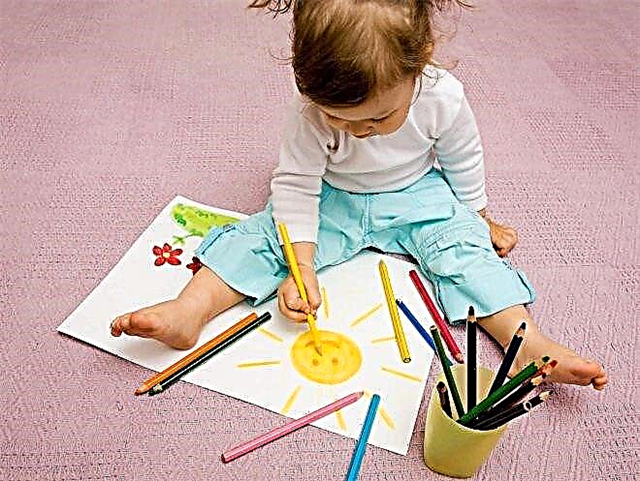
This is followed by a period when verbal-logical consciousness begins to form. It's important to do here development of speech and vocabulary of the baby. You need to talk more with the child, answer his questions, ask him questions so that he learns to independently reason and build an answer. During a game or activity, such as painting, let him speak his actions and describe in words everything that he sees and does.
It must be remembered that the basis of a child's development is play, it underlies most of his desires and actions, so it is important that the play is fun, developing and full of meaning.
Only then will the baby spend time not in vain, but with maximum benefit for the development of his thinking.
Exercises
There are many tasks and exercises for the development of thinking in preschool and school children... Here are some of them.
"What does it look like?"
Draw geometric shapes on a piece of paper: circle, square, triangle. Ask your baby what they look like. And you can also propose to supplement these figures with some details so that they become those objects that they look like, for example, let the circle become a flower, a square - a house, and a triangle - the roof of a house.
There is a reverse version of this exercise. Let the child tell you what shapes the sun, lid, box, book, and any other thing look like.

"What's superfluous?"
This is an exercise with pictures of different objects. Such sets with pictures can be bought, or you can draw yourself. For example, on several of them, let something be edible, and on one - inedible. It is necessary for the kid to guess which card with which picture is superfluous.
"What is it?"
This exercise requires come up with vocabulary and ask the child to name each of them by one common name... For example, list different utensils and ask your child to think about what a general word to use for all of the above. You can also name fruits, vegetables, flowers, various wild and domestic animals, birds.

"Word game"
Here the flight of the parent's fantasy is not limited to anything. You can find and come up with any situations associated with words and numbers.
For example, ask your toddler to list all of the objects in the room that have the same color. Or let him list all the words he knows in the suggested letter.
And you can also make a riddle with numbers living in objects. For example, ask what number is hidden in the stool, square and cat. The answer is four legs for a stool, four legs for a cat, four corners for a square.
"Puss in a poke"
For this educational game you will need children's lotto with pictures. The parent takes and looks at the picture without showing it to the child. Then he describes what is depicted on the card, without naming the item itself. The child must guess what it is about. As you grow older, you can switch roles with your child. Let him describe, and the adult guesses. With the help of such a game, the skills of analysis and synthesis are trained, and the baby's speech abilities are also developed.
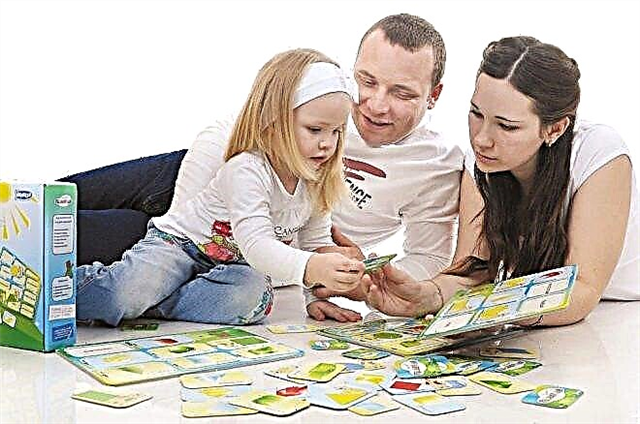
"Pathfinder"
Draw various footprints (of a person, animals, birds) on a white sheet of paper. Tell the kid that this is a snowy clearing that someone was walking along. He must guess who exactly.
A more advanced version of this exercise involves adding logic. For instance, barefoot human footprints in the snow. Let the kid guess what is not quite right in the picture. If he says that a person does not go barefoot in winter, then everything is fine with the development of logic.


